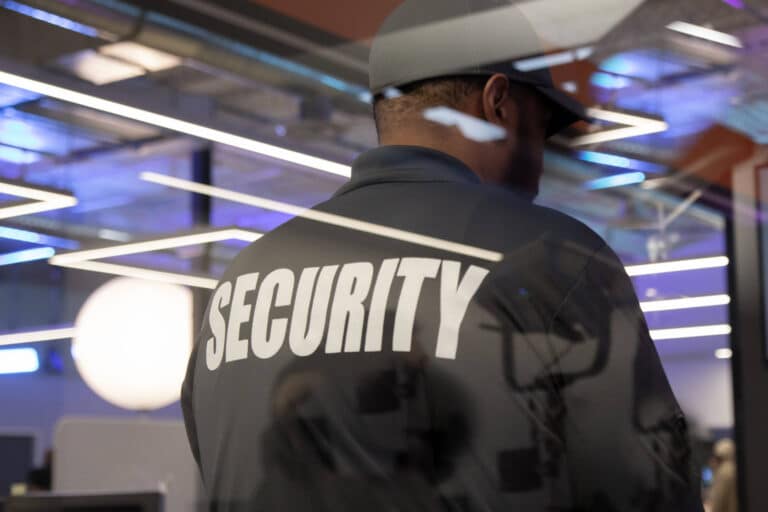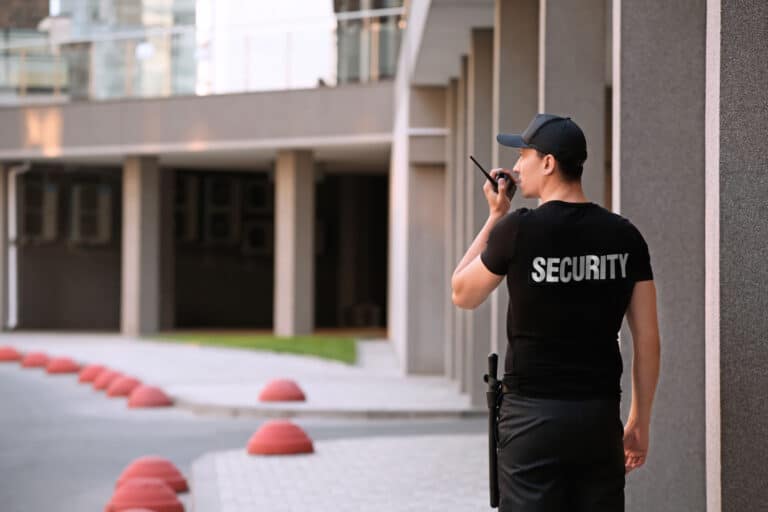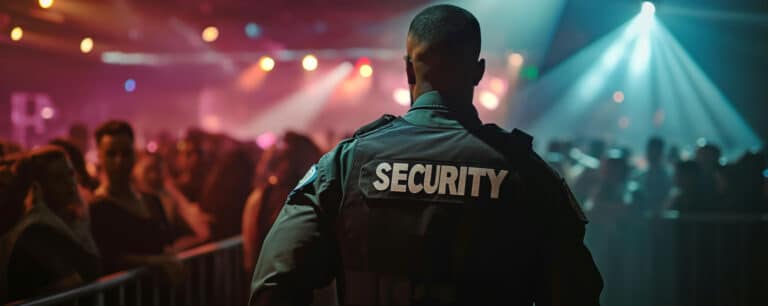Introductions and Backgrounds
- The host, Tony Garcia, introduces himself as the founder of the Arizona Security Group, which has been in business for over 30 years, specializing in contract and in-house security training programs, and holds a CPP through ASIS and a bachelor’s in business management 00:31.
- Tony Garcia is joined by Danny, who works for a municipal security unit that is part of a municipal PD structure, and has experience in contract security, private security, and utilities security 00:58.
- The show aims to explore the different types of security in Arizona, including in-house and contract security, and Danny shares his experience in both areas 01:23.
- Danny recounts his background in security, starting with a job at a local security company, “number four,” which had contracts with strip malls and apartment complexes, and where he worked overnight shifts in high-crime areas 01:53.
- Danny’s introduction to the unarmed private security world was marked by challenging situations, including dealing with cultural differences and unusual requests from residents 03:02.
- Tony Garcia shares his own experience in contract security, starting with a job at a hospital in Chandler, where he worked for a contract security company and observed the differences between what the company expected and what the hospital required 03:29.
- Tony Garcia also worked for an in-house department at the local courthouse, where he was a trainer, and notes the differences in responsibilities between in-house and contract security 03:51.
Experiences and Challenges in Security
- Working in security can involve dealing with various incidents, including stabbings and shootings, which may require calling the police almost every other night, and writing reports for incidents that may lead to lawsuits or trials 05:00.
- In some cases, security personnel may need to recall facts and details from past incidents, even years later, when testifying in court or being questioned by lawyers 05:32.
- Security personnel may be required to write detailed reports, which can be used as evidence in court, and may need to be prepared to testify in trials 06:12.
- Court security involves working with the court system, which can be an eye-opening experience, as it requires providing clear and concise information, without interpretation, to aid in the trial process 06:40.
- There are various fields in security, including hospital security, school security, and court security, each with its unique challenges and responsibilities 07:16.
- Court security personnel, like those working in other security fields, must provide excellent customer service, as they deal with various individuals, including those involved in court cases 08:56.
- A career path in security can be diverse, with individuals moving from one field to another, such as from working in security for a utilities company to working in court security, and may involve additional education or training, such as attending a police academy 07:37.
- Guards deal with a combination of well-meaning people and straight-up criminals, and treating them with kindness and respect often yields better results, but they must also be firm when necessary 09:02.
Court Security Procedures and Challenges
- Certain items, such as pocket knives, kabut, and monkey fists, are not allowed in the courthouse due to the risk of them being used as weapons 09:46.
- A screening process, including metal detectors, X-ray machines, and manual checks, is in place to catch prohibited items, but it’s not foolproof 10:17.
- Guards are often the first point of contact when someone is taken into custody and are responsible for waiting with them until the police arrive 10:52.
- Guards carry defensive tools like tasers and handcuffs but do not carry firearms, although this policy may change in the future 10:58.
- When waiting with someone who is going into custody, guards aim to keep them calm and talk to them like a human, which usually prevents situations from escalating 11:37.
- In cases where a situation becomes volatile, multiple guards are sent to assist, and the presence of police throughout the building can serve as a deterrent 11:46.
- Most of the issues guards deal with involve people being upset about not being able to bring items into the courthouse or not being able to find someone, and they often provide escorts and assist with orders of protection 12:22.
- Court guards may be asked to escort judges or victims to their cars to ensure their safety, which involves walking them to their vehicle, watching them leave, and then returning to their duties 12:58.
Training and Expertise in Court Security
- As a trainer for Superior Court, officers undergo 80 hours of training, covering topics such as baton training and customer service, with a specialized focus on operating X-ray machines 13:23.
- The X-ray expert, nicknamed “X-ray” Ray, was a specialist in recognizing items in X-ray scans, and his retirement led to the current speaker becoming the de facto expert in this area 13:47.
- The process of identifying items in X-ray scans involves pattern recognition and attention to detail, with the expert using phrases like “if you see how it’s made, then you’ll see what it is” to train others 14:29.
- Identifying knives and other prohibited items in X-ray scans can be challenging, but there are telltale signs such as screws, glue, and rivets that can indicate the presence of a prohibited item 14:53.
- The increasing use of polymer and plastic materials in prohibited items makes them harder to detect, and some companies are creating defensive tools that can evade TSA detection 15:12.
- Police officers sometimes try to bring their firearms into the courthouse, even when they are there on personal business, but are generally understanding when told they cannot do so 16:23.
- In rare cases, officers may try to use their badge to justify bringing a firearm into the courthouse, but this is not permitted 16:30.
- Guards have a recognition process for familiar faces, but they still check the flat badge even if the person is wearing a uniform, and most of the time, individuals understand and are okay with it 16:45.
Transition to Municipal Security and Benefits
- The transition from law enforcement to municipal security was easier because the individual was still in the academy and hadn’t started patrolling on the street or doing full scenarios, so they were still in the security mindset 17:08.
- The individual had to adapt to thinking like law enforcement officers (LEOs) when they joined the municipal unit, as many of their coworkers were retired LEOs or military personnel 18:02.
- The benefits of working in municipal security include good medical health benefits, which are a significant improvement from what the individual had in private security 18:42.
- The job offers a 4/10 schedule, with Fridays off, as well as paid time off (PTO), vacation, and holidays, which is a significant improvement from the individual’s previous schedule 19:13.
- The individual previously worked as a field supervisor for a utilities contract, where they had to work all weekends and holidays, including a particularly difficult Christmas Eve shift 19:36.
- Working at a gas station, especially at 2 in the morning, can be unwelcoming, and it’s essential to always carry toilet paper or wipes, as seen in the experience of working at a QT gas station in Phoenix 21:03.
- The municipal court has a retirement plan, which is part of the state’s system, and it’s based on a point system 21:38.
Diverse Security Roles and Responsibilities
- The security industry encompasses various aspects, including working at construction sites, transporting “unwelcome guests,” and providing security for residential communities, sports venues, and high-end communities with celebrities and VIPs 22:00.
- Individuals from different facets of security are represented in the classroom, including those who work for Northrop Grumman, GEO, construction sites, residential communities, and sports venues 22:05.
- Despite working full-time for the municipality, one can still work part-time for their old security company on weekends, as long as there’s no conflict of interest and they’re not armed at the construction site 23:21.
- The consistent line through all types of security is serving a customer, whether it’s through a private contract, working for the police department, or providing in-house security for a large corporation 24:19.
- Security work can be divided into two main categories: serving people who come into a location to do business, or serving and protecting people within a specific building or chain of command, with the main difference often being pay and the need for a guard card 24:57.
- In-house security personnel, like the person who spent over 20 years in the job, may not need a guard card, which is a common occurrence 25:25.
- Some contract security officers, such as those working for Northrup Grumman, require a secret clearance, which is a higher level of security requirement 25:46.
- Working on military contracts, such as the one for the Air Force Special Operations Command, may not require a secret clearance, but some personnel may need to undergo background checks and obtain a secret clearance 26:18.
Training and Development in Security
- The requirements for in-house security personnel can be less stringent, with no training requirements, which can lead to subpar performance if there are no set standards or training methodologies in place 27:47.
- A training methodology was developed for two locations, a court and a City Hall-type building, to standardize training for security personnel 28:29.
- The training methodology was written in a bullet-point format and was implemented to improve the quality of training for security officers 28:29.
- The security unit had a lack of institutional knowledge due to previous employees moving on or being let go, resulting in a “Legacy effect” where the next person had to figure things out on their own 28:54.
- A sergeant had to take on the responsibility of figuring out the unit’s operations by himself, but he did a great job despite the challenges 29:22.
- The narrator was able to help with the unit’s operations about a year and a half ago, with the assistance of a mentor named Mike who encouraged him to write down procedures and get things organized 29:47.
- Mike is a great facilitator who helps people use their strengths, and his efforts led to the creation of a useful document that is still being used today 29:53.
Recruitment and Training Process for Court Security
- The narrator’s experience in the security unit was made easier by having already gone through the police department’s recruitment process, which included a thorough vetting process 30:39.
- The Superior Courts have an official Training Academy that security guards can attend, which is not required but recommended for those with prior security or law enforcement experience 31:13.
- The training process for security guards typically involves a background clearance process, but does not include a psychological evaluation, which some people wish was still a part of the process 31:32.
- The Court Security Guard Academy (CSGA) is a three-week training program that security guards can attend, although the narrator’s training was only one week long 32:12.
- Court security guards do not carry batons, but instead use tasers and handcuffs as part of their training equipment 32:28.
- Handcuffing training is provided by the Court Security Guard Academy, but in the future, the police department (PD) will take over this training 32:35.
- The police department will also be responsible for providing pepper spray training to court security guards 32:42.
- Previously, court security guards received training from adjacent entities, but the decision has been made to integrate them with the police department for training purposes 32:52.
- This change is expected to be beneficial for court security guards going forward 33:08.
Future Discussions
- The conversation will be continued in future episodes, where more topics will be discussed 33:18.





